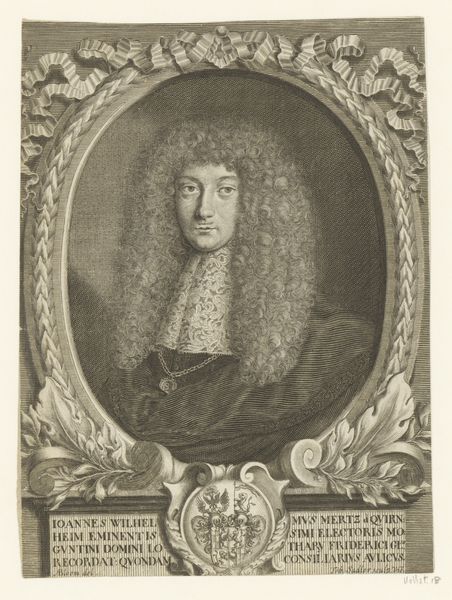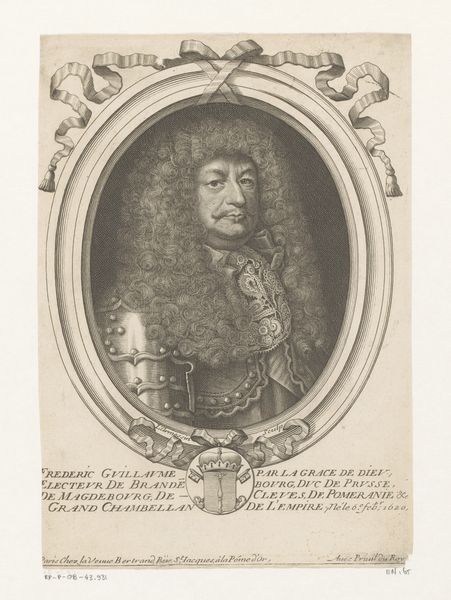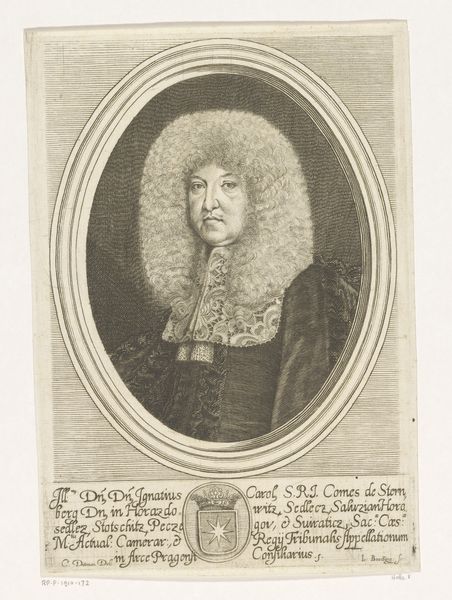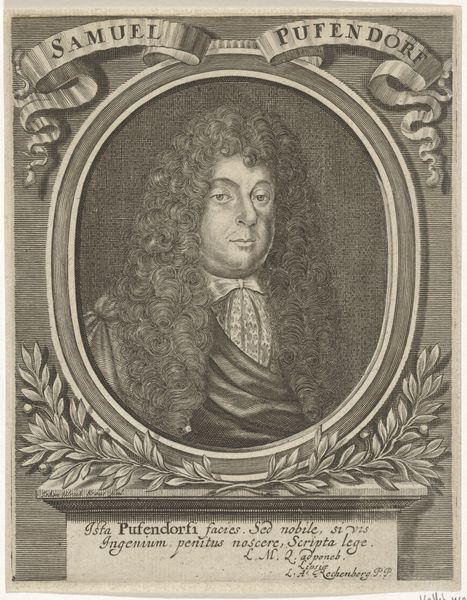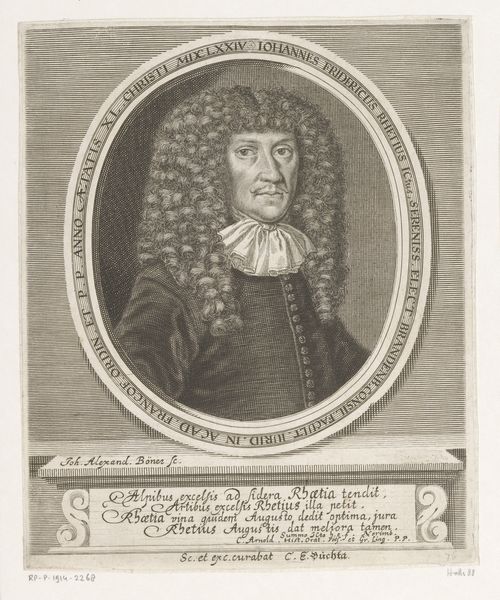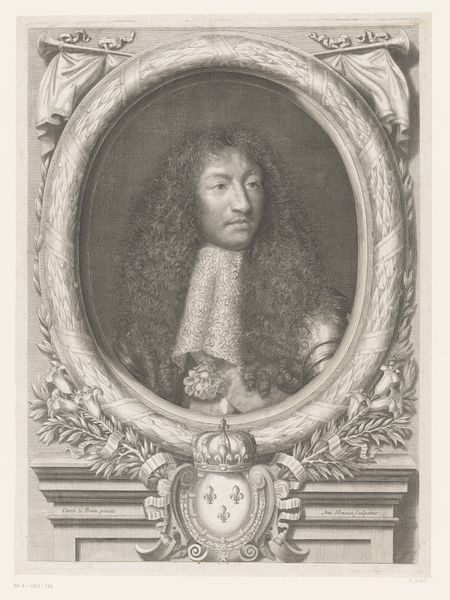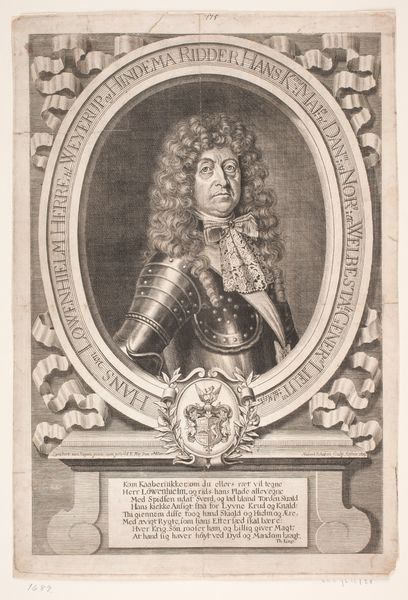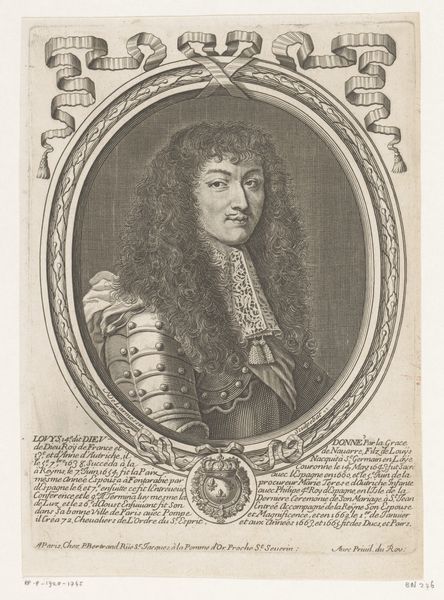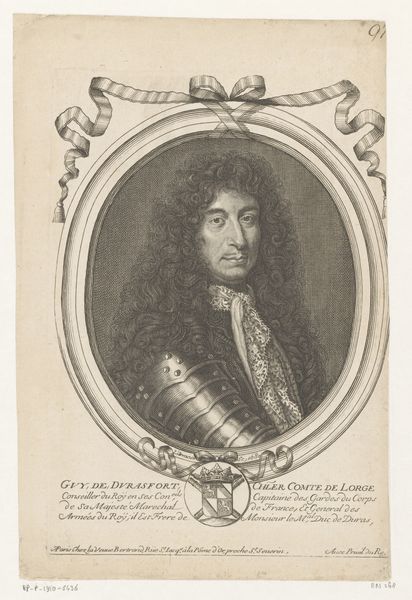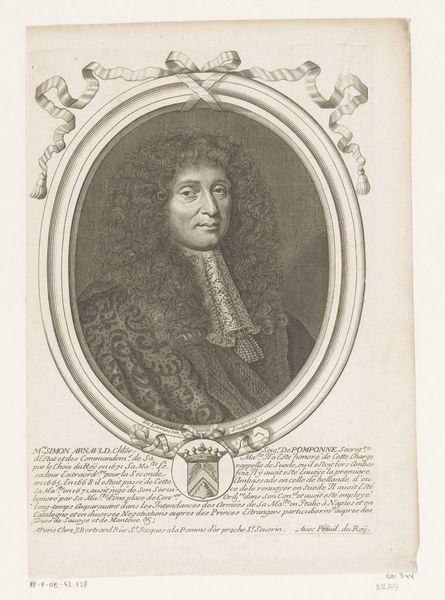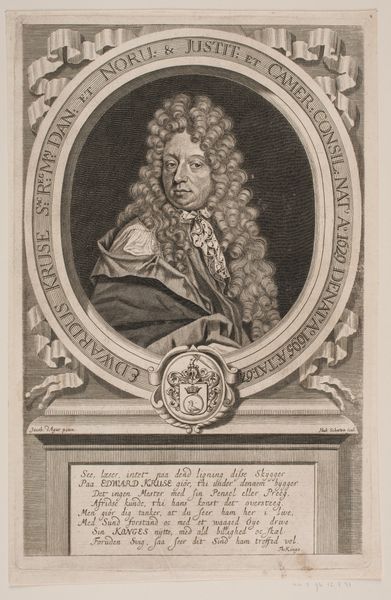
print, engraving
#
portrait
#
baroque
# print
#
old engraving style
#
caricature
#
portrait reference
#
limited contrast and shading
#
line
#
portrait drawing
#
engraving
Dimensions: height 219 mm, width 147 mm
Copyright: Rijks Museum: Open Domain
Johann Borcking made this portrait of Franz Augustin, Graf von Waldstein as an engraving. In this process, the artist used a tool called a burin to manually cut lines into a metal plate, inking the plate to transfer the image onto paper. Borcking's technical skill is evident in the precise lines that define Waldstein's features, the elaborate wig, and the textures of his clothing. Consider the amount of work involved in this production process. Engravings like these were not only artistic statements but also important documents, circulating images and ideas in a pre-photographic age. The choice of engraving, a medium that allows for reproducibility, is significant. It speaks to the growing importance of visual communication and the desire to disseminate images widely, fitting into the expanding print culture of the time. In a sense, it democratizes the image, making it accessible beyond the aristocratic class. Recognizing the artistic and social context of this print challenges traditional notions of art, inviting us to consider the intersections of craft, design, and material culture.
Comments
No comments
Be the first to comment and join the conversation on the ultimate creative platform.
